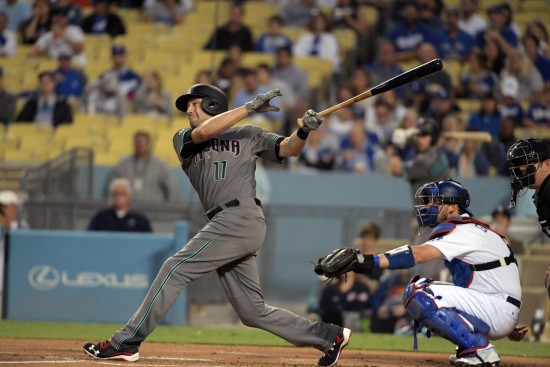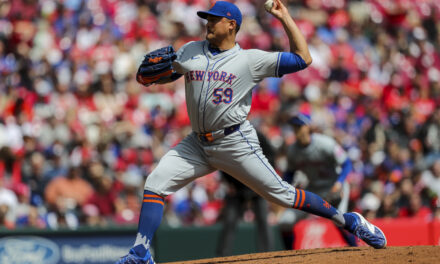
A.J. Pollock
Position: CF
Bats/Throws: R/R
Age: December 5, 1987 (30)
Traditional Stats: .257/.316/.484, 21 2B, 5 3B, 21 HR, 65 RBI, 13 SB, 2 CS
Advanced Stats: 2.5 bWAR, 2.5 fWAR 106 OPS+, 110 wRC+
Defensive Stats: 6 DRS, -0.7 UZR
In 2015, Pollock appeared to be a budding star in the game. In the only year he was an All Star and he won a Gold Glove, Pollock hit .315/.367/.498 with 39 doubles, 20 homers, and 76 RBI. He would also have 39 stolen bases that year. His 131 wRC+ trailed only Mike Trout and Andrew McCutchen among Major League center fielders. His 14 DRS was the third best in the Majors and best in the National League.
At 27, you could make the argument Pollock was the second best center fielder in the game. Not only could he cover the ground, but he could hit. He was entering his prime years, and you could see him becoming not just the best player on the Diamondbacks but also one of the premier players in baseball in short order.
That didn’t happen. Not even close, and the main culprit was injuries.
Looking over Pollock’s career, he has played over 150 games just once. He has played over 130 games just twice. Over the past two seasons, he has played 112 and 113 games respectively.
Front and center for Pollock is his right elbow. Back in 2010, when he was participating in his first Spring Training, he would dive for a ball in the outfield and break that elbow. Pollock would break that same elbow during the 2016 Spring Training on a headfirst slide into home plate. While the elbow has been an issue for him, over the past two seasons, he has still been injury prone.
In 2017, Pollock missed 44 games with a right groin strain. In 2018, he missed 43 games with a left thumb avulsion fracture.
Notably, when Pollock landed on the disabled list, he had been hitting .293/.349/.620 over his first 44 games. After returning from the injury, he hit .236/.297/.407 in 73 games. Therein lies the problem with Pollock. It’s not just the injuries, but how much those injuries have taken on his production.
Since that 2015 season, Pollock has played in 237 games, and he has hit .261/.323/.473 with a 105 wRC+.
Like his offense, Pollock’s defense is in decline. In his 2015 Gold Glove season, he had a 14 DRS and a 9.7 UZR. Those numbers have steadily declined with him having a 6 DRS and a -0.7 UZR this year.
The good news with Pollock is he’s still good enough to play center everyday at the MLB level. The question with him will ultimately be how long. You can interpret this to mean due to injuries or declining production.
Contract
With the postseason still transpiring, outlets have not yet begun assembling their estimations on what different players are expected to receive in free agency.
In some ways, Pollock compares to Carlos Gomez. Heading into last offseason, Gomez was 31 years old, limited to 105 games due to injuries, had a 107 wRC+, but just a -4 DRS.
In last year’s offseason, Gomez could only get a one year $4 million deal from the Rays. If we have a repeat of last year’s offseason, we could see a similar deal for Pollock.
That said, Pollock does seem like a better player, and teams have positioned themselves to spend big this offseason. As a result, Pollock could get a multi-year deal worth around $8-10 million a year. Maybe more.
Recommendation
Looking at the Mets roster, they are in desperate need of a right-handed bat to balance out Jay Bruce, Michael Conforto, Jeff McNeil, and Brandon Nimmo. Given Juan Lagares‘ injury history and expiring deal, Pollock seems like a perfect fit.
He’s not.
Seeing how the Mets have handled injuries over the past few years, the last thing they need to do is go and a give a big contract to an injury prone player whose production has declined over the past three years.
Unless Pollock is available for a reasonable one year deal, his contract has the potential to be real boondoggle. As such, the Mets should look elsewhere to address their need for a right-hand bat.















